
Filter News
Area of Research
- (-) Energy Science (110)
- (-) Fusion and Fission (8)
- (-) Neutron Science (130)
- Advanced Manufacturing (4)
- Biology and Environment (38)
- Building Technologies (1)
- Computational Biology (1)
- Computational Engineering (3)
- Computer Science (17)
- Electricity and Smart Grid (2)
- Energy Sciences (1)
- Functional Materials for Energy (2)
- Fusion Energy (2)
- Isotopes (2)
- Materials (97)
- Materials for Computing (16)
- Mathematics (1)
- National Security (29)
- Nuclear Science and Technology (6)
- Quantum information Science (8)
- Supercomputing (121)
News Topics
- (-) Artificial Intelligence (15)
- (-) Computer Science (35)
- (-) Energy Storage (75)
- (-) Microelectronics (1)
- (-) Microscopy (11)
- (-) Neutron Science (121)
- 3-D Printing/Advanced Manufacturing (83)
- Advanced Reactors (9)
- Big Data (7)
- Bioenergy (31)
- Biology (18)
- Biomedical (21)
- Biotechnology (5)
- Buildings (38)
- Chemical Sciences (20)
- Clean Water (10)
- Composites (18)
- Coronavirus (22)
- Critical Materials (10)
- Cybersecurity (9)
- Education (1)
- Environment (60)
- Exascale Computing (3)
- Fossil Energy (3)
- Frontier (4)
- Fusion (22)
- Grid (39)
- High-Performance Computing (9)
- Hydropower (3)
- Isotopes (2)
- ITER (6)
- Machine Learning (10)
- Materials (46)
- Materials Science (48)
- Mathematics (3)
- Mercury (3)
- Molten Salt (1)
- Nanotechnology (18)
- National Security (7)
- Nuclear Energy (32)
- Partnerships (13)
- Physics (11)
- Polymers (12)
- Quantum Computing (1)
- Quantum Science (8)
- Security (8)
- Simulation (7)
- Space Exploration (6)
- Statistics (1)
- Summit (9)
- Transportation (69)
Media Contacts
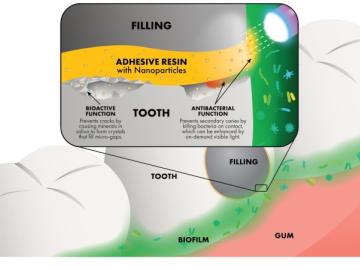
To help address the issue of dental restoration, Oak Ridge National Laboratory researchers are using neutron scattering to study how nanoparticles with antibacterial properties can be added to adhesive resins, which are used by dentists to strengthen the bond between a tooth and its polymer composite filling.

Ionic conduction involves the movement of ions from one location to another inside a material. The ions travel through point defects, which are irregularities in the otherwise consistent arrangement of atoms known as the crystal lattice. This sometimes sluggish process can limit the performance and efficiency of fuel cells, batteries, and other energy storage technologies.

Scientists at Oak Ridge National Laboratory have developed a low-cost, printed, flexible sensor that can wrap around power cables to precisely monitor electrical loads from household appliances to support grid operations.

OAK RIDGE, Tenn., March 20, 2019—Direct observations of the structure and catalytic mechanism of a prototypical kinase enzyme—protein kinase A or PKA—will provide researchers and drug developers with significantly enhanced abilities to understand and treat fatal diseases and neurological disorders such as cancer, diabetes, and cystic fibrosis.

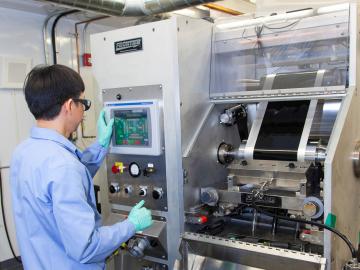
The use of lithium-ion batteries has surged in recent years, starting with electronics and expanding into many applications, including the growing electric and hybrid vehicle industry. But the technologies to optimize recycling of these batteries have not kept pace.
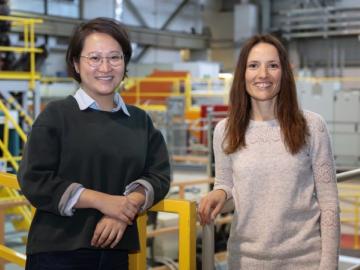
Yue Yuan, a second-year PhD student at NC State University’s Wilson College of Textiles, is working to create textiles that filter carbon dioxide (CO2) by using the latest scientific techniques in synthesis and imaging. Known as biocatalytic textiles, these materials could serve as sustainable scrubbers for CO2 capture by using enzymes trapped in bio-based polymers to catalyze the hydration of CO2.
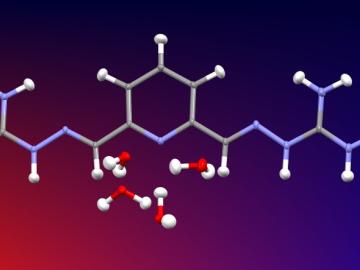
Researchers used neutron scattering at Oak Ridge National Laboratory’s Spallation Neutron Source to investigate the effectiveness of a novel crystallization method to capture carbon dioxide directly from the air.

Oak Ridge National Laboratory scientists have created open source software that scales up analysis of motor designs to run on the fastest computers available, including those accessible to outside users at the Oak Ridge Leadership Computing Facility.
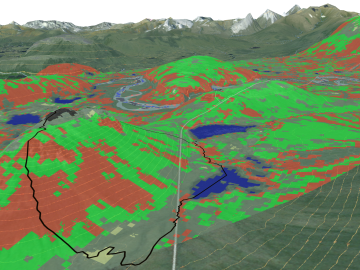
A team of scientists led by Oak Ridge National Laboratory used machine learning methods to generate a high-resolution map of vegetation growing in the remote reaches of the Alaskan tundra.


